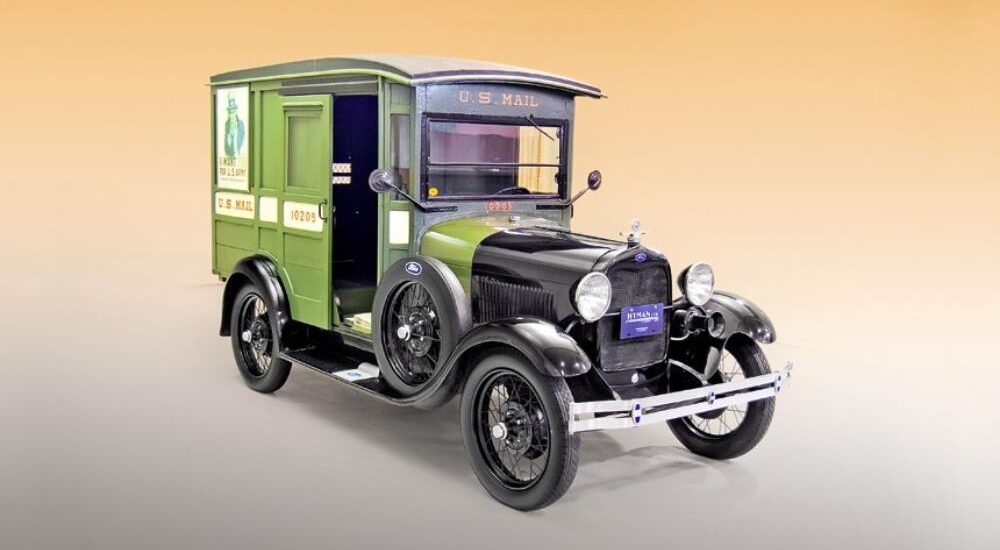The Early Days of Postal Vans
The postal van, one of the automobile’s earliest “professions,” has a rich history. The first “horseless carriages” were outfitted with a closed box behind the seats to transport mail. The driver, exposed to the elements, sat in an open-air seat—a testament to their resilience. Over time, the design evolved into a vehicle specifically for mail delivery, eventually providing humane conditions not only for parcels but also for the drivers.
The Durability Factor
For postal duties, the primary requirement of a vehicle was endurance. The cars traversed vast distances, often in places where the term “road” was more theoretical than real. Harsh conditions could render any normal chassis useless within weeks, compelling postal workers to continually search for sturdier machines.

The Arrival of Ford Model A
The Ford Model A, featured here, became a mainstay in postal services. The United States Federal Postal Service, after observing the car’s performance post its 1928 debut, bought a large batch in 1931. The commercial version of the Ford sedan was available in three variants: an open cargo platform, a van with solid sides, or just the chassis. The postal officials opted for the chassis, a cost-effective choice that allowed for custom modifications to suit their mail transport needs.
Unique Features of the Model A Postal Van
This particular Ford Model A, a post-1929 model recognizable by its radiator grille, was modified for commercial use, with painted front headlights and radiator—a distinction from the chromed versions on passenger models. It featured sliding doors on both sides, leading to a driver’s cabin with a single seat and an internal sliding door to access the mail compartment.

Access to the driver’s workplace (on the left) was through a sliding door (on the right).
The vehicle’s height was increased to accommodate a mail compartment of 100 cubic feet (less than three cubic meters). American mail, typically transported in bags, was easily handled with sturdy hooks inside the van. The car also had a speed-limiting device, capping it at 35 miles per hour, and included windshield wipers, an additional cabin light, and a muffler from the Ford AA commercial truck.

The door leading from the driver’s cabin to the mail compartment was also sliding
The Legacy of the Ford Model A in Postal Services
Appreciating the reliability of Ford vehicles, the Federal Postal Service acquired additional Ford AA commercial chassis in 1931, fitted with similar bodies, for larger mail deliveries. These vans served reliably until the early 1950s, marking an era of dependable and straightforward postal service vehicles.

The hinged rear doors, through which postal deliveries were loaded, were locked with a solid latch. In bad weather, it was possible to lower and fasten screens made of waterproof fabric over the metal mesh that covered the cutouts in these doors.
Preserving the Past
Interestingly, postal vehicles were used to their limits, with little thought to their post-service life. However, a special division within the Ford Model A enthusiasts’ club focuses on preserving these historic postal vehicles. Through their efforts, the few remaining postal vans, long retired, are now repaired, restored, and maintained, though only a handful still exist.
This journey into the history of the Ford Model A reveals the vehicle’s significant but often overlooked role in shaping America’s postal services. It’s a tale of durability, adaptability, and innovation, resonating with anyone who appreciates the intersection of travel, history, and technology.

Photo: Sean Dugan, Hyman Ltd.
This is a translation. You can read an original article here: Андрей Хрисанфов — о фургоне Ford A, попавшем на почтовую службу в США

Published February 01, 2024 • 5m to read





